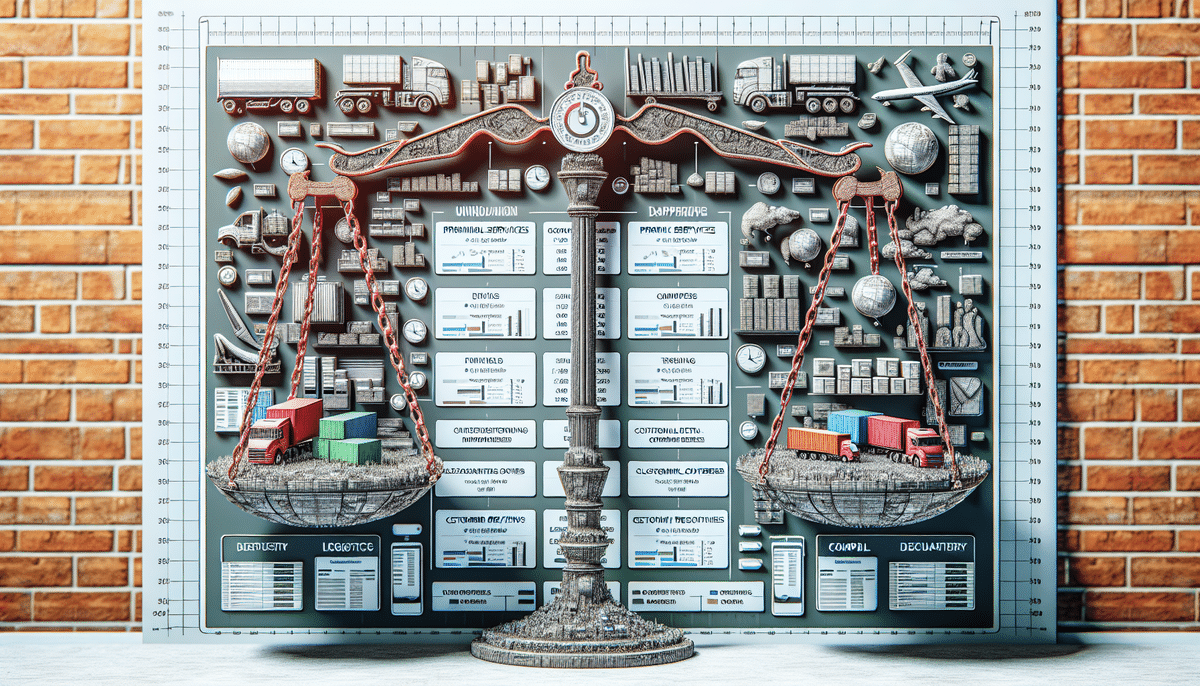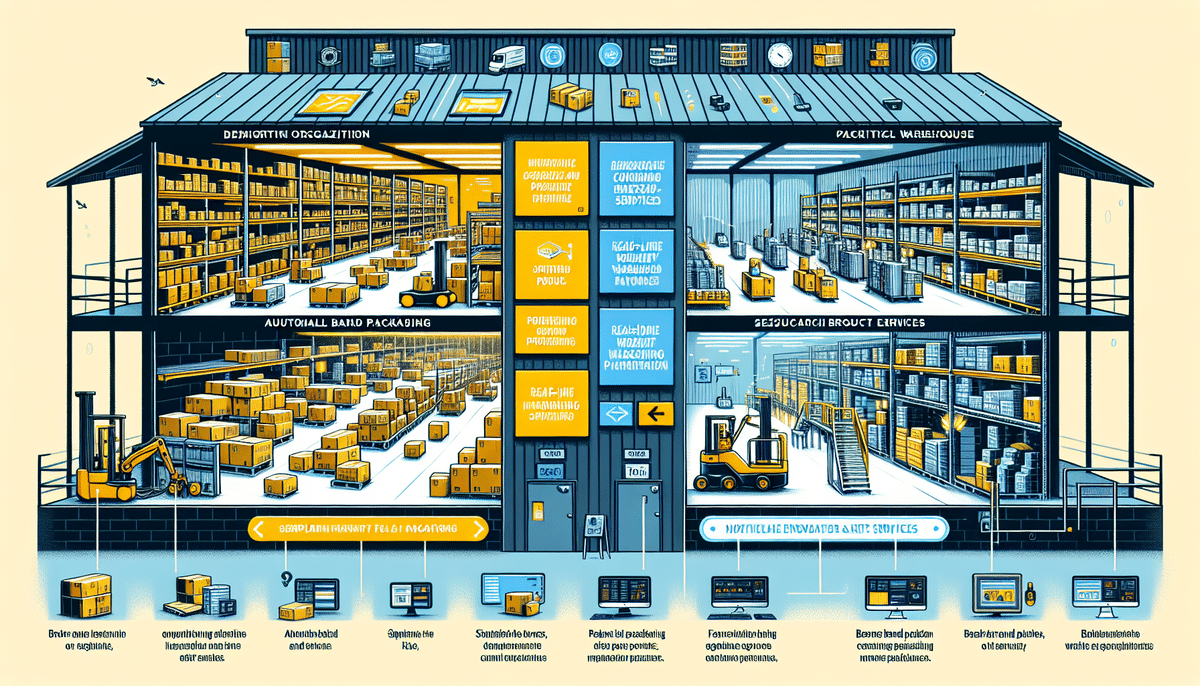Flowspace vs ShipBob: Choosing the Right Fulfillment Partner for Your Business
Are you struggling to choose between Flowspace and ShipBob for your order fulfillment needs? Both platforms offer a range of features to help businesses streamline their operations and enhance customer satisfaction. Let’s take a closer look at each platform to determine which one is better suited to your business needs.
Understanding Flowspace and ShipBob
Flowspace is a cloud-based platform that connects businesses with on-demand warehouse and fulfillment services. It allows businesses to store inventory, manage orders, and track shipments in real-time. Flowspace operates across multiple locations in the United States, making it easier for businesses to find nearby warehouses.
ShipBob is an all-in-one fulfillment solution that manages the entire logistics process for businesses. It provides warehousing, order fulfillment, shipping, and returns management services to businesses of all sizes. With a network of fulfillment centers across the United States and the ability to ship to over 220 countries, ShipBob offers extensive reach and scalability.
Both Flowspace and ShipBob offer significant benefits, including cost savings, increased efficiency, and improved customer satisfaction. By outsourcing logistics and fulfillment, businesses can focus on their core competencies while leaving complex logistics to the experts. Additionally, both platforms offer flexible pricing models and scalable solutions, making them ideal for businesses of various sizes and industries.
Key Features and Services
Flowspace Features
- On-Demand Warehousing: Rent warehouse space only when needed, providing flexibility for fluctuating inventory demands.
- Flexible Pricing: Choose pricing options that align with your business needs and budget.
- Real-Time Inventory Tracking: Monitor inventory levels in real-time to make informed business decisions.
ShipBob Features
- Multiple Fulfillment Centers: Store inventory in multiple locations to reduce shipping times and costs.
- Automated Shipping and Tracking: Manage shipping and tracking seamlessly through automated systems.
- User-Friendly Dashboard: Easily manage orders and inventory with an intuitive dashboard interface.
- Integrations: Seamlessly integrate with popular e-commerce platforms like Shopify and WooCommerce.
Pros and Cons
Flowspace Pros
- On-demand warehousing provides flexibility for varying inventory needs.
- Flexible pricing options accommodate different business budgets.
- Real-time inventory tracking enhances inventory management.
Flowspace Cons
- Shipping speeds may be slower compared to other fulfillment providers.
- The pricing structure can be complex for some businesses.
ShipBob Pros
- Multiple fulfillment centers enable faster shipping times and reduced costs.
- Automated systems simplify shipping and tracking processes.
- User-friendly dashboard facilitates easy order and inventory management.
- Discounted shipping rates through partnerships with major carriers.
ShipBob Cons
- Higher pricing compared to some other fulfillment providers.
- Longer onboarding process may delay initial setup.
Pricing Comparison
Both Flowspace and ShipBob offer flexible pricing models tailored to different business needs. Flowspace charges based on warehouse space and the volume of inventory stored, making it a cost-effective option for businesses with occasional warehousing needs. This pay-as-you-go approach ensures you only pay for the services you use.
ShipBob bases its pricing on the number of orders fulfilled each month, along with storage and shipping fees. While ShipBob may have higher upfront costs, its comprehensive services, including discounted shipping rates, can provide significant value for businesses with high order volumes or complex fulfillment requirements.
It's essential to evaluate your business's specific needs and priorities when comparing pricing. Consider factors such as order volume, storage requirements, and the need for additional services like kitting or quality control.
Shipping and Fulfillment Capabilities
When it comes to shipping options, both Flowspace and ShipBob offer a variety of services to ensure timely and cost-effective delivery of products. Flowspace partners with multiple carriers to provide standard shipping options. However, shipping times might be slower for businesses using Flowspace due to fewer fulfillment centers.
ShipBob excels in this area with its extensive network of fulfillment centers, allowing businesses to store inventory closer to their customer base. This proximity reduces shipping times and costs. Additionally, ShipBob offers expedited shipping and international shipping options, enhancing the overall customer experience.
Flowspace also provides warehousing and storage solutions with secure, climate-controlled environments, which is beneficial for businesses requiring specific storage conditions or extended storage periods.
Ease of Use and Integrations
Both platforms offer user-friendly interfaces, but they differ in complexity and functionality. Flowspace provides a straightforward platform that is easy to navigate, making it ideal for businesses that require simple, efficient fulfillment solutions.
ShipBob offers a more comprehensive software platform that integrates seamlessly with popular e-commerce platforms such as Shopify and WooCommerce. This integration allows businesses to manage orders, inventory, and shipping from a single dashboard. Additionally, ShipBob provides real-time tracking information, keeping both businesses and customers informed about order statuses.
Customer Support and Fulfillment Center Locations
Customer support is a crucial factor when selecting a fulfillment provider. Flowspace offers 24/7 customer support through phone, email, and live chat, ensuring that businesses can receive assistance whenever needed.
ShipBob also provides customer support, though its availability may be limited to business hours. Some users have reported longer wait times, which can be a drawback for businesses requiring immediate assistance.
In terms of fulfillment center locations, ShipBob has a more extensive network across the United States and internationally, allowing businesses to store inventory closer to their customers and reducing shipping times. Flowspace primarily operates in major metropolitan areas within the U.S., which can benefit businesses with a high volume of orders in those regions.
Conclusion: Which Platform Suits Your Business?
The choice between Flowspace and ShipBob hinges on your business's specific needs and goals. If your business requires flexible, on-demand warehousing with occasional fulfillment needs, Flowspace may be the more cost-effective and straightforward option. Its pay-as-you-go model and extensive U.S. coverage make it ideal for businesses with fluctuating inventory demands.
Conversely, if your business demands comprehensive fulfillment services, faster shipping times, and has a consistent order volume, ShipBob is likely the better choice. Its multiple fulfillment centers, advanced integrations, and automated systems provide robust support for businesses aiming to scale and enhance their logistics operations.
Additionally, consider factors such as budget, required shipping options, customer support preferences, and the geographical reach of your business. Evaluating these aspects will help you make an informed decision that aligns with your business objectives.
If you're still unsure which platform is best for your business, consulting with an e-commerce fulfillment expert can provide personalized guidance to help you choose the most suitable solution.




















